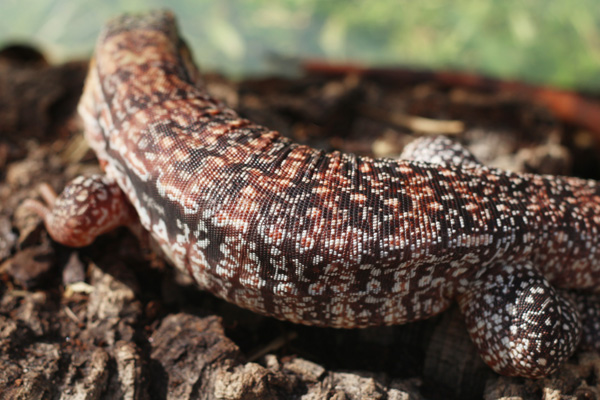We’ve all shopped for chameleons before, and probably yearned for the beautiful male offspring of a certain species or locale but groaned at the added price. It can cost from $20 to a few hundred more to purchase a male compared to a female of the same species, especially when we talk about the ever-popular and flashy panther chameleon (F. pardalis.) It’s on an almost daily basis that I get emails from readers asking me to sex their baby chameleons, and to read their frustration after having paid more money for what they were told was a male only to discover they have a little female instead. I understand, as males in almost all the chameleon species are flashier, prettier, more ornate, and don’t come with the added challenge of egg-laying. So I see the appeal, especially for first-time keepers.
And for breeders of popular pet species like panthers or veileds (C. calyptratus), the Holy Grail for them would be to be able to produce more male offspring than female offspring, who sell more quickly and for a higher price. But why can’t we? Don’t other species like geckos or snakes develop their gender characteristics depending on incubation temperatures?
Without doing into a longer explanation than it needs to be, we’re going to look into this, what people in the industry call temp-sexing. Known more technically as temperature-dependent sex determination. You'll be more familiar with mammalian sex determination, (genotypic sex determination) where gender is decided by the chromosomal contribution of the father. Females only have the chromosomes for female offspring (two copies of the X-chromosome, which makes them homogametic) while males have X and Y, and whichever of his chromosomes ends up in the fertilized egg will determine the sex of the resulting offspring. In certain reptilian species this is true as well, but for others the gender of the offspring depends on other external factors instead.
 |
| An American crocodile photographed in a park where I walk my dog regularly; this crocodile species is temperature sexed for male or female. |
In certain species, such as turtles, crocodilians, and a few others, their sex is determined by the environmental temperature during certain periods of incubation. Generally, temperatures in one range will produce females, temperatures in a different range will produce males, and the temperature within the narrow band between these will produce a mixture of both (called, the threshold temperature.) For a time it was believed that a species could only receive their sex from either one of these mechanisms or the other, not both. That temperature-dependent species were in essence "gender-less" until the environment made the decision for them. Recent research on the Australian skink lizard suggests that this may not be completely true for all; that some species that have a genotypic gender can be swayed depending on the environmental conditions during incubation. The thought is that these species may be a half-way gray area between the two types of sex determination, species which may make it exclusively into one strategy or another given enough time.
For a long time chameleon breeders have tested chameleon incubation to determine whether this category of reptile can be manipulated in the same way as some geckos or snakes. So far, the consensus indicates that this is not true. Chameleons seem to be genotypically driven, and as such, cannot be manipulated by incubation temperatures. What's more, high incubation temperatures seem to produce weaker offspring overall, while a more moderate incubation temperature creates the strongest offspring, but neither of these affect the gender ratio of a clutch. So as with mammals, in chameleon clutches we get what we get due to chance and must rely on visually sexing youngsters correctly for sale.
I do not believe that I have ever seen anyone advertise this, but rest assured, if you ever see anyone selling chameleon babies as temperature incubated for one sex or another, you are looking at a liar!













Interesting! I figured as much since no one ever mentions it. Is there a median ratio for the amount of males versus females in a given clutch? On average are there usually more females born than males?
ReplyDeleteHi Olimpia - do you have some references on the studies? I would like to read up on this
ReplyDelete